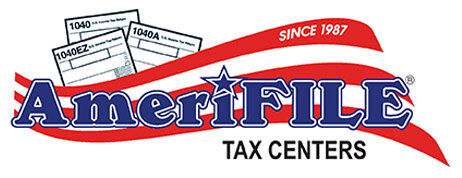Get the most Child Tax Credit with AmeriFile!
Let’s break down Child Tax Credit in a simple way:
Child Tax Credit (CTC):
Imagine the government wants to help families take care of their kids. So, they say, “If you have kids, we’ll give you some money back when you pay your taxes.” This is called the Child Tax Credit.
• It’s like a reward for being a parent and helping your kids grow up happy and healthy.
• For each kid in your family, you might get some money back (up to a certain amount, like $2,000).
Additional Child Tax Credit (ACTC):
Sometimes, families don’t earn enough money to owe a lot of taxes, so they can’t use the full Child Tax Credit. The government says, “That’s okay! We’ll still give you some extra money even if you don’t owe much in taxes.” That extra money is called the Additional Child Tax Credit.
• It’s like getting a gift card when you don’t owe anything at the store—you still get to take something home!
Why It’s Helpful:
This helps parents pay for things kids need, like school supplies, clothes, or toys. The government is basically saying, “We know kids can be expensive, so here’s some help!”
HISTORY OF CTC:
The Child Tax Credit (CTC) is a significant federal tax benefit designed to support families raising children by reducing their tax liability. Its history reflects evolving efforts to reduce child poverty and provide financial assistance to families. Here's an overview of its development:
1997: Creation of the Child Tax Credit
The CTC was introduced as part of the Taxpayer Relief Act of 1997, signed into law by President Bill Clinton.
Initially, the credit provided up to $400 per qualifying child under age 17.
The credit was nonrefundable, meaning it could only reduce a taxpayer’s liability to zero but did not provide a refund if no taxes were owed.
2001: Expansion Under Bush Administration
The Economic Growth and Tax Relief Reconciliation Act of 2001 (EGTRRA), signed by President George W. Bush, doubled the maximum credit to $1,000 per child over several years.
The law introduced partial refundability through the Additional Child Tax Credit (ACTC), allowing families to receive a refund for unused portions of the credit if they had at least $10,000 in earned income (adjusted annually for inflation).
2008-2009: Recession-Era Adjustments
During the Great Recession, Congress temporarily expanded the CTC as part of the Emergency Economic Stabilization Act of 2008 and the American Recovery and Reinvestment Act of 2009 (ARRA).
The earned income threshold for refundability was reduced to $3,000, making the credit more accessible to low-income families.
2015: Permanency Under the PATH Act
The Protecting Americans from Tax Hikes (PATH) Act of 2015 made the $1,000 maximum credit and the reduced refundability threshold permanent.
It also introduced measures to reduce improper payments and tax fraud associated with the credit.
2017: Major Changes Under the Tax Cuts and Jobs Act
The Tax Cuts and Jobs Act (TCJA) of 2017, signed by President Donald Trump, nearly doubled the maximum credit to $2,000 per child under age 17.
The refundable portion (ACTC) increased to $1,400, and the earned income threshold for refundability dropped to $2,500.
The phase-out income levels were significantly raised, allowing more middle- and upper-middle-income families to qualify.
A $500 nonrefundable credit was introduced for non-child dependents.
2021: Transformational Expansion Under the American Rescue Plan
The American Rescue Plan Act of 2021 (ARPA), signed by President Joe Biden, temporarily expanded the CTC for the 2021 tax year in response to the COVID-19 pandemic:
The credit increased to $3,600 per child under age 6 and $3,000 per child ages 6-17.
The credit became fully refundable, eliminating the earned income requirement for low-income families.
Half of the credit was distributed in advance through monthly payments from July to December 2021, providing immediate financial relief.
These changes marked a shift toward using the CTC as a tool to reduce child poverty significantly.
2022 and Beyond: Post-ARPA Developments
The ARPA expansions expired at the end of 2021, and the CTC reverted to pre-2021 levels in 2022:
The maximum credit returned to $2,000 per child under age 17.
Refundability thresholds and phase-out limits also reverted to pre-2021 rules.
Discussions about extending or making the expanded CTC permanent have been ongoing, with proposals focusing on full refundability and higher benefit levels.
Impact of the Child Tax Credit
The CTC has been a cornerstone of U.S. family tax policy, reducing child poverty rates and providing financial support to millions of families.
The 2021 expansion under ARPA demonstrated the potential for significant reductions in child poverty, with research showing millions of children lifted above the poverty line during its implementation.
